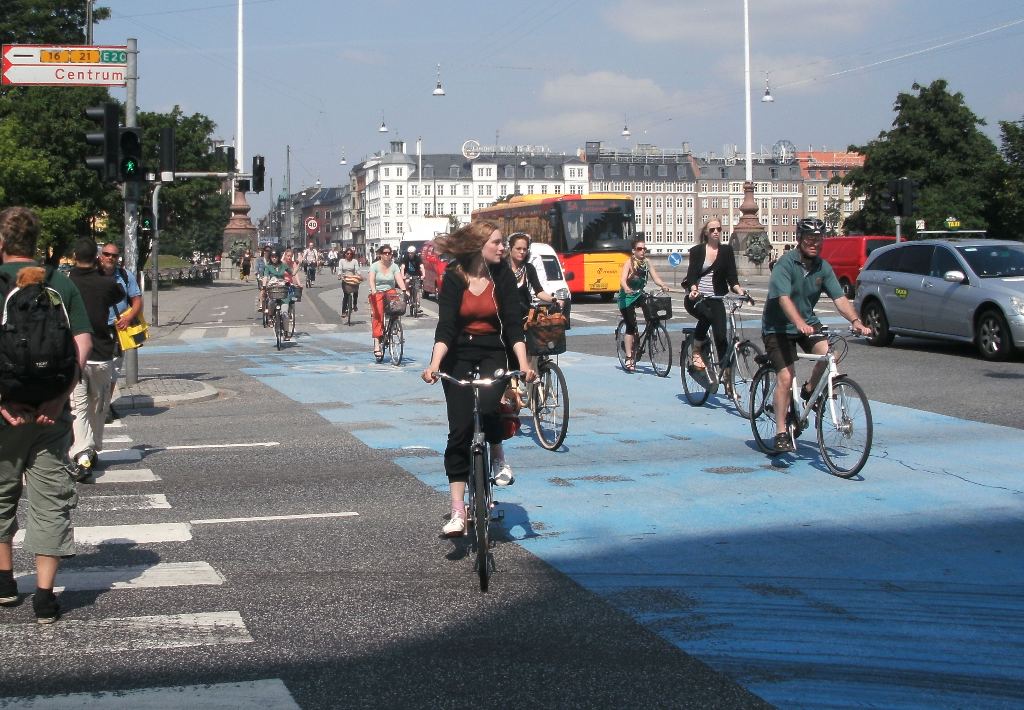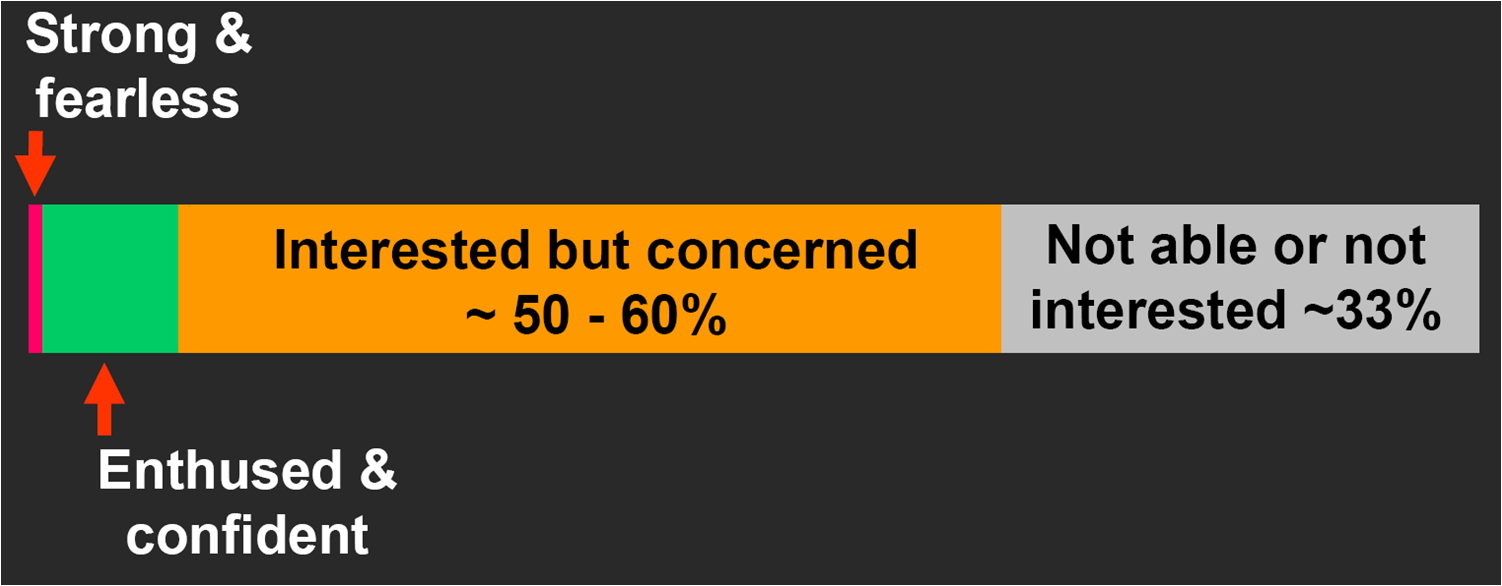When trying to encourage more people to cycle, it’s helpful to “know your audience”. There’s an interesting theory that was developed in Portland, Oregon, to help understand who might want to cycle for transportation. Its intuitive logic has been so successful that many other places have also embraced its philosophy when considering their own would-be cycling populations. Some of you may have seen it before, but I think it’s helpful to repeat it here.
The so-called “Four Types” categorisation was first developed in 2005, as the City of Portland began to consider what it would take to dramatically increase bicycle use in Portland. City Bicycle Coordinator Roger Geller (who was out here earlier this year) is credited with having come up with the concept and putting up some numbers that seemed about right (and generally haven’t been contested much since). So here’s how it looks:

- Let’s start with the right-most group first – not able or not interested in cycling; otherwise known as the “No Way, No How” group. These are people who will not in the foreseeable future use a bike for transportation, even given the right conditions (although you may get some of them riding recreationally, perhaps in a mountain-bike park). It is estimated that maybe a third of your population might fall into this category, whether because of their physical limitations, social or cultural issues with cycling, or maybe logistical reasons. Standard travel behaviour theory says ignore this group for now – you have easier fish to fry…
- On to the far left, and that tiny sliver of people are known as the “Strong & Fearless”. This is your archetypal urban road warrior; nothing will stop them cycling from A to B, even if no facilities at all are provided. They are usually relatively immune to traffic concerns and often seem to be typically young and male. This group is probably no more than 1% of your population and that reflects the level of cycling you find even in cities with absolutely no provision for cycling (e.g. many parts of Auckland until recently). I suspect I probably fall into this category, but I realise that I’m not “normal” in that regard; in a former job I used to do things like stand in the middle of a high-speed highway with a survey pole, so traffic doesn’t bother me as much as it does to most people.
- Next over are the “Enthused & Confident”. For this group, some basic concessions of space for cycling will usually keep them happy. So a simple network of on-road cycle lanes (or just adequate shoulders) and intersection treatments will generally sustain this group. The proportion in this category might range between ~6-12%; funnily enough that mirrors what we find in Christchurch, which has historically based a lot of its cycling network on cycle lanes.
- Finally we come to the biggest group – the “Interested but Concerned”. This group wants to ride their bikes, but they have real issues with interacting with motor traffic. So they are looking for options that provide them with SLOW, LOW, or NO traffic, e.g. Vancouver’s separated bikeways and neighbourhood greenways. This desire came through very strongly in last year’s Share an Idea feedback, and reflects the huge untapped potential for people to cycle more if the right conditions are provided.
Since the initial development of the “Four Types” concept, various other groups have assessed it and generally found that it suits their needs too. Subsequent research has also tried to verify the size and nature of these four groups, e.g. this work by Portland State University. Even the recent NZ research on potential cyclists identified similar preferences for separated facilities when cycling.

Do you agree with these categories? Which type of cyclist are you?


Oh, I’m definitely in the “interested but concerned” group, although I occasionally get up the courage to get out there in ChCh and ride my bike (although roundabouts and intersections really scare me!).
Yes, I’m one of the many interested but concerned. Try to always use my bike at quiet times, 9am to 11am weekdays and before 10am weekends. Pre-plan trips carefully to go mostly in anti-clockwise direction so there are very few or no right turns. Avoid particularly difficult intersections altogether. Lack of decent separated facilities is not only stopping a large number of people from cycling altogether but has a big effect on the riding habits of those who do.
I’m in the “enthused but confident” catergory at present but as I approach 45 years of cycling and my reactions slow I regret I will soon have to move into the “interested but concerned” catergory and stop biking to work every day. It’s not only vehicles; in fact I feel reasonalby confident about them since I can either hear them or see them. The “strong and fearless” perhaps scare me more especially when they pass me at speed with scant space to spare. My reaction is to swerve. And since I was shoved (into the gutter at the end of the bridge) by an irate cyclist who couldn’t get past me on the Waltham Road overbridge (I didn’t even know he was there) I am paranoid about other cyclists behind me when I use this route home. I look forward to space for all to ride (hopefully before I am too old to appreciate it).
I have been using the Geller four types when I talk to council or community boards.